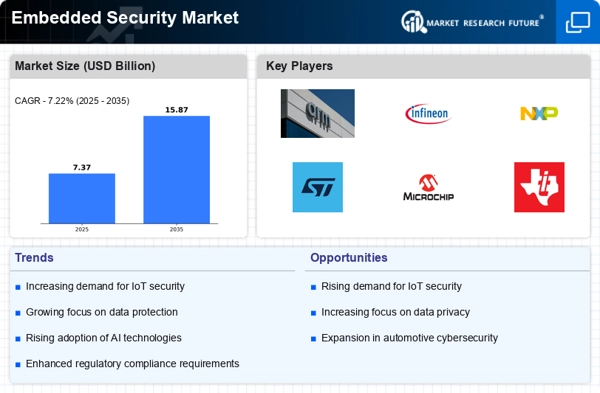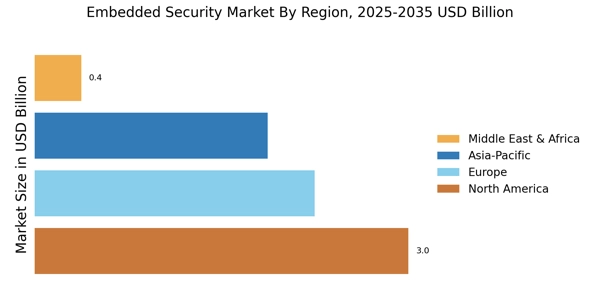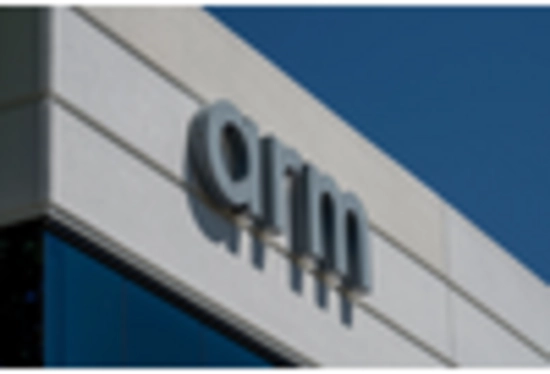The Embedded Security Market is currently characterized by a dynamic competitive landscape, driven by the increasing demand for secure connectivity across various sectors, including automotive, IoT, and consumer electronics. Key players such as Arm Holdings (GB), Infineon Technologies (DE), and NXP Semiconductors (NL) are strategically positioning themselves through innovation and partnerships. Arm Holdings (GB) focuses on developing advanced security architectures that cater to the growing needs of IoT devices, while Infineon Technologies (DE) emphasizes its expertise in automotive security solutions, particularly in the context of electric vehicles. NXP Semiconductors (NL) is enhancing its market presence through strategic collaborations aimed at integrating security features into its semiconductor offerings, thereby shaping a competitive environment that prioritizes technological advancement and customer-centric solutions.
In terms of business tactics, companies are increasingly localizing manufacturing and optimizing supply chains to enhance operational efficiency and responsiveness to market demands. The Embedded Security Market appears moderately fragmented, with a mix of established players and emerging startups. This structure allows for a diverse range of innovations and competitive strategies, as key players leverage their strengths to capture market share and respond to evolving consumer needs.
In August 2025, Infineon Technologies (DE) announced a strategic partnership with a leading automotive manufacturer to develop next-generation secure microcontrollers tailored for electric vehicles. This collaboration is significant as it underscores Infineon's commitment to enhancing security in the rapidly evolving automotive sector, particularly as the industry shifts towards electrification and increased connectivity. The partnership is likely to bolster Infineon's position as a leader in automotive security solutions, aligning with the broader trend of integrating advanced security features into vehicle architectures.
In September 2025, NXP Semiconductors (NL) launched a new line of secure elements designed specifically for IoT applications, emphasizing enhanced security protocols and ease of integration. This product introduction is pivotal, as it addresses the growing concerns surrounding IoT security vulnerabilities. By focusing on secure elements, NXP is not only expanding its product portfolio but also reinforcing its commitment to providing robust security solutions that meet the demands of an increasingly interconnected world.
In October 2025, Arm Holdings (GB) unveiled a new security architecture aimed at protecting edge devices from emerging cyber threats. This development is crucial, as it reflects Arm's proactive approach to addressing the security challenges posed by the proliferation of edge computing. By enhancing its security offerings, Arm is likely to strengthen its competitive edge in the market, appealing to manufacturers seeking to safeguard their devices against sophisticated attacks.
As of October 2025, the Embedded Security Market is witnessing trends that emphasize digitalization, sustainability, and the integration of artificial intelligence. Strategic alliances among key players are increasingly shaping the competitive landscape, fostering innovation and collaborative solutions. The shift from price-based competition to a focus on technological differentiation and supply chain reliability is becoming evident. Companies that prioritize innovation and adaptability are likely to thrive in this evolving market, as the demand for secure, reliable, and efficient solutions continues to grow.
















Leave a Comment